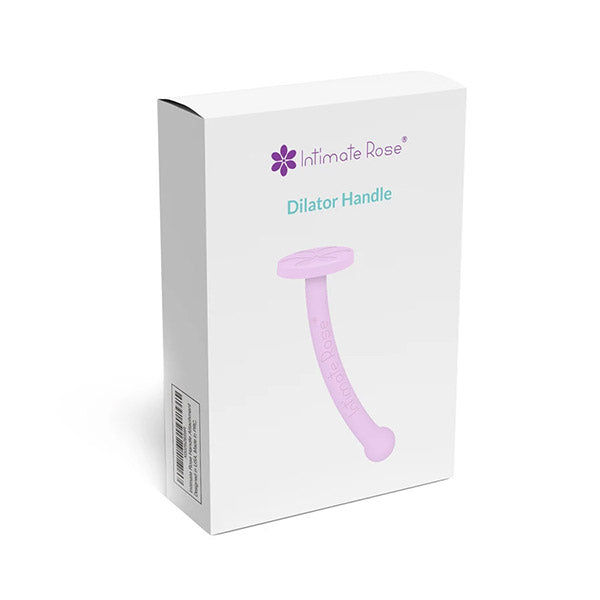Deep pelvic floor muscle tension, tender points, and trigger points are often the culprit of pelvic pain. Chronic clenching of the pelvic floor muscles, or habitual postures such as leg crossing, or tucking the tailbone under as commonly seen in ballet dancers, can all result in deep pelvic floor muscle tension.
The results of having deep pelvic floor muscle tightness is often dyspareunia (pain with sex), pain with urination, difficulty with bowel movements, a deep ache sensation in the lower abdomen or around the genitals, and difficulty sitting.
Pelvic Floor Trigger Points
Trigger points are defined as areas of muscle that are painful to the touch (palpation). They are characterized by the presence of taut bands or “knots” in the muscle and the generation of a referral pattern of pain.
Tender points are areas of tenderness occurring in the muscles, muscle-tendon junctions, bursa, or fat pads but can also arise from the presence of scar tissue in the vagina. They are commonly present in conditions of chronic pelvic pain including vaginismus, vestibulodynia, vulvodynia, coccygeus, proctalgia fugax, endometriosis, post-childbirth, and after pelvic surgery, such as a hysterectomy.
Common symptoms of pelvic floor muscles pain due to trigger points or tender points include:
- Achy sensations from deep inside the pelvis
- Burning or zinging sensations during intercourse
- Burning sensations while urinating without a bacterial infection
- Sexual pain with no known cause
- Inability to tolerate vaginal penetration for sex, medical exams or tampon use
- Pain in the tailbone (coccyx)
- Chronic constipation with an unknown cause
- Pain in the groin
- Pain around the bladder
Chronic Pelvic Floor Pain Due to Trigger Points
Chronic pelvic pain often creates difficulty with vaginal penetration due to pain in the pelvic floor muscles that may be provoked by penetration, or constant pain that prevents attempting intercourse. The pelvic floor muscles support the pelvic organs including the bladder, uterus, and bowel.
The urethra and rectum pass through the pelvic floor muscles, so the presence of trigger points can contribute to issues such as constipation, pain with urination, or pain when sitting, affecting people of all genders and ages. Additionally, the muscles surrounding the vaginal opening in women, along with tender points and muscle restriction, can contribute to pain with penetration for those experiencing muscle tightness.

Image depicting the deep pelvic floor muscles Copyright Intimate Rose
Retraining the muscles to relax takes time. Many people who experience chronic pelvic pain experienced abuse, surgery, radiation, or a traumatic experience that preceded pelvic pain. For this reason, counseling may be beneficial while working on training the body.
Anxiety, stress, pain, and fear of pain often reinforce the symptoms of chronic pelvic pain. The process of healing involves learning to sense when the muscles spasm and training the brain to relax them prior to the contraction starting.

Tight? Start here!

Tight? Start here!
What is the Pelvic Floor?
The pelvic floor, or inner core, has become a popular topic of discussion among women, fitness instructors, medical providers and celebrities. The pelvic floor muscles are a group of three distinct layers of muscles at the base of the pelvic girdle.
They are not flat like the floor of a room is, though. At rest, they are domed downward. However, they are mobile and capable of squeezing inward and lifting upward in the pelvic cavity. The pelvic floor muscles consist of several muscles collectively.

Deep Layer Of The Pelvic Floor Muscles
The pelvic girdle includes two crescent-shaped pelvic bones. And these bones join at the front to form the pubic symphysis. Also, they join at the back on the triangle-shaped sacrum to form the sacroiliac joints. The coccyx, or tailbone, attaches to the base of the sacrum. Lastly, the ligaments secure each of the joints, which connect bone to bone.
However, for simplification and categorization, they are often referred to as the superficial urogenital muscles or superficial pelvic floor muscles, and the deep pelvic floor muscles or levator ani muscles. These muscles support the pelvic organs, rectum, uterus and bladder. The terminal openings of these organs pass through, and in females result in the three sphincteric openings of the anus, vagina and urethra.
Treatment of Deep Pelvic Floor Muscle Tension
Treatment for deep pelvic floor muscle tension includes relieving tender points, learning to relax the muscles, and using gentle exercises and good posture to restore blood flow to the pelvic area.
Deep breathing for Pelvic Pain
Learning to breathe properly is an important part of healing pelvic and vaginal pain. Many people with pelvic pain breathe shallowly. By learning to breathe through the diaphragm, it is possible to improve overall circulation, reduce strain on the pelvic floor muscles, and reduce tension in the neck, head, and shoulders.
In order to breathe properly, practice the following exercise daily, coupled with use of the massage therapy. To begin, find a comfortable position lying down.
Often, it is helpful to put pillows or a bolster under the knees to reduce tension in the lower back. Place one hand on the chest bone and the other on the stomach. The goal during this breathing exercise is to keep the chest still but allow the stomach to rise and fall with the breath.

Breathe in slowly and deeply through the nose, allowing your stomach to gently rise, keeping the chest still. Exhale gently through the mouth, allowing the stomach to gently fall. Pay close attention to your stomach rising and falling as you breathe in through the nose and out through the mouth.
Continue to take nice, slow breaths as you allow all thoughts and disruptions to fade away. Visualize the tension in your body being released as your body relaxes.
Treating Vaginismus (Pain With Penetration or Pain with Sex)
Pelvic pain due to trigger points is often associated with painful sexual intercourse. Many people have difficulty with penetration and benefit from the use of vaginal dilators, also referred to as vaginal trainers. Intimate Rose’s Vaginal Dilators for vaginismus are available in eight sizes to help you reach your goals.
What is a vaginal dilator?
A vaginal dilator is a medical device shaped to resemble a tampon or dildo gently tapered towards the insertion point to make initial penetration easier. They are made from medical-grade materials engineered to be comfortable and gentle on the surrounding tissue and are available in a broad range of sizes and lengths.

For the general maintenance of your pelvic floor training, couple use of the massage tool of choice with a 15-minute breathing and vaginal trainer practice up to 3 times per week for 3 to 4 weeks. Doing this will help set muscle memory in place. Your health care provider may also give you a specific maintenance plan, as well. You may find that once you have trained your body and no longer experience pain with vaginal penetration, you no longer need to practice with your trainer.
Additional Resources
There are many resources available for women experiencing vaginismus, including:
- Visit our blog for more educational videos and training tips from pelvic health expert, Amanda Olson, DPT, PRPC.
- Email us at Support@IntimateRose.com with any questions you have.

Tight? Start here!





















